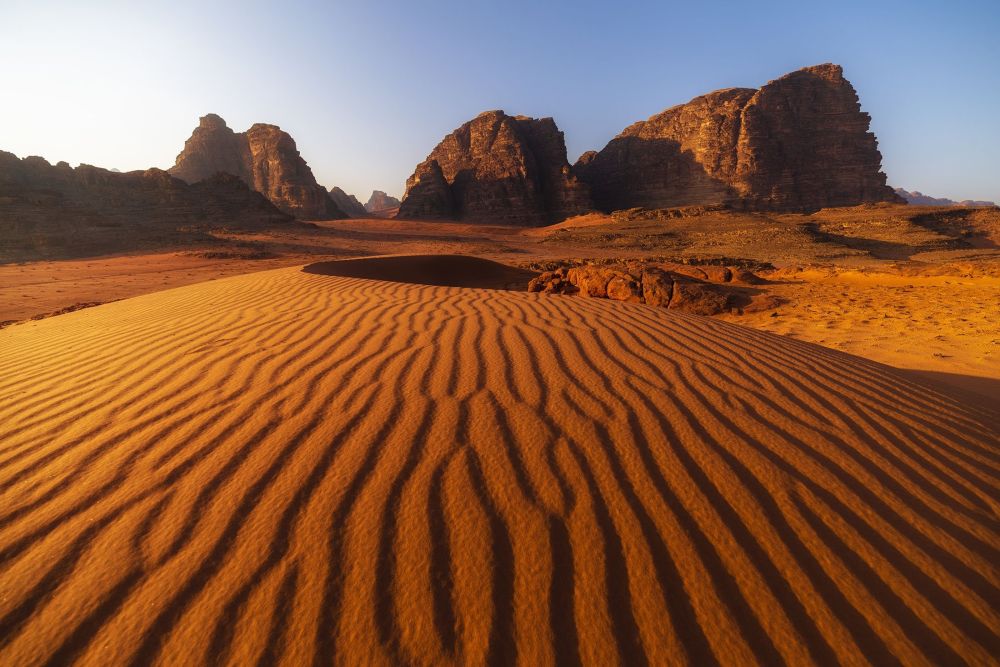

Wadi Rum, also known as the Valley of the Moon, is a captivating desert landscape in southern Jordan, famous for its towering sandstone mountains, deep canyons, and ever-changing sand dunes. The Sand Dunes Area in Wadi Rum has captured the fascination of travelers for centuries, with its breathtaking scenery and rich cultural heritage.
The history of tourism in Wadi Rum can trace its origins back to the early 20th century when the area gained international fame due to the exploits of British officer T.E. Lawrence, better known as Lawrence of Arabia. The 1962 epic film "Lawrence of Arabia" further increased the allure of Wadi Rum, showcasing its stunning landscapes to audiences worldwide and setting the stage for its emergence as a sought-after tourist destination.
Initially, tourists ventured into Wadi Rum in search of adventure and to retrace the steps of Lawrence. The Bedouin tribes, native to the region, served as guides, sharing their extensive knowledge of the terrain and traditional ways of life.
From the 1980s onwards, Wadi Rum witnessed a gradual growth in eco-tourism and adventure tourism. Recognition of the area's unique biodiversity and geological formations culminated in its designation as a UNESCO World Heritage Site in 2011, under both natural and cultural criteria. This distinction has reinforced conservation efforts and sustainable tourism practices in the region.
Adventure tourism has also flourished, with activities like rock climbing, hot air ballooning, camel treks, and 4x4 jeep tours becoming increasingly popular. Tourists from all over the world are drawn to the exhilarating experiences offered by the rugged terrain and vast expanse of the desert.
The latest trends in Wadi Rum tourism have been influenced by the growing demand for unique, immersive travel experiences. Visitors are now seeking more personalized and intimate encounters with the landscape and local culture.
Luxury camping, or "glamping," has gained popularity among tourists who wish to enjoy the serenity of the desert under star-lit skies, without foregoing comfort. These camps offer modern amenities and traditional Bedouin hospitality, creating a harmonious blend of authenticity and luxury.
Digital connectivity and social media have also played a significant role in shaping contemporary tourism trends. The otherworldly beauty of the Sand Dunes Area, with its dramatic sunsets and untouched sands, has become a magnet for photographers and influencers seeking to capture and share the destination's magic with their audiences.
Despite the modern developments in tourism infrastructure and services, Wadi Rum has retained its timeless appeal. Conservation and sustainable tourism initiatives ensure that the cultural integrity and environmental sanctity of the Sand Dunes Area are preserved for future generations to enjoy.
In conclusion, the Sand Dunes Area in Wadi Rum, Jordan, provides an unforgettable intersection of history, adventure, and natural splendor. Through its evolution as a tourist hotspot, it demonstrates how sustainable practices and local engagement can create a thriving, responsible tourism industry.
Whether it's through the lens of its storied past or its current status as a prime destination for eco-conscious and thrill-seeking travelers, W0072i Rum continues to enchant and inspire all who wander through its majestic sands.